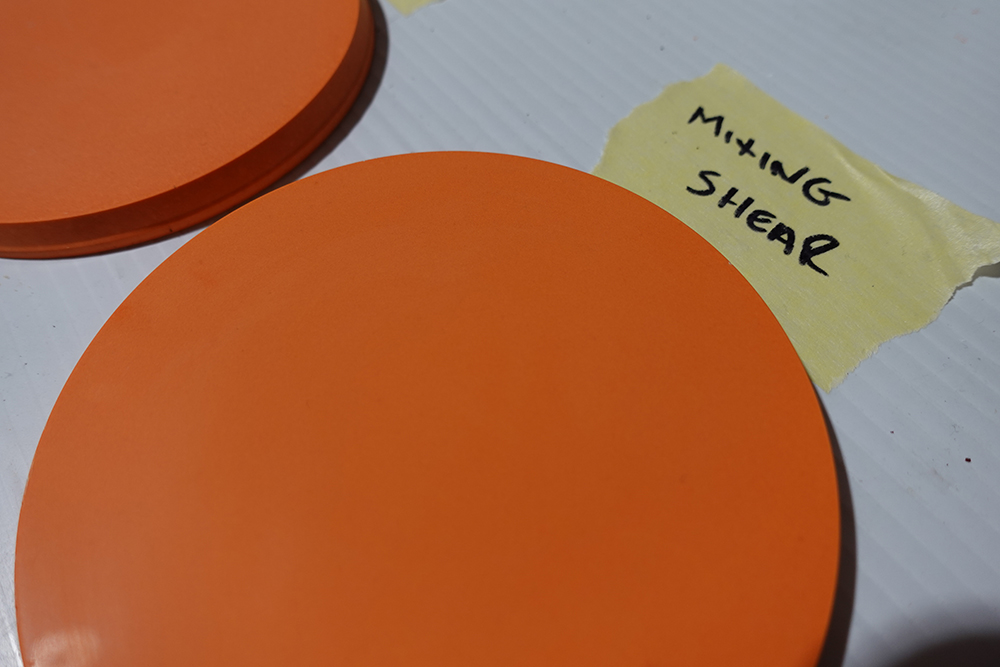Jesmonite : Mixing by Hand vs Mixing Blade
Jesmonite is becoming increasingly popular, leading to a rise in new users of the product. A common question we receive is about the difference between mixing by hand and using a mechanical mixer, typically a mixing blade attached to a drill.
The answer is that there is a considerable difference. While it's possible to achieve good results by mixing by hand, using a mixing blade significantly reduces lumps and provides a better finish. In our opinion, well-mixed Jesmonite with a mixing blade flows more smoothly, results in a lump-free mixture, and offers more consistent color when pigments are used. We stock Jesmonite's selection of three different sizes of mixing blades made from stainless steel, which are strong, durable, and easy to clean. Although alternative mixing tools can be used, the Jesmonite blades are genuinely well-made and, with proper care, will last a long time.
For demonstration purposes, we will mix Jesmonite AC100 and pour it into lids made from polypropylene (from our 1-litre buckets) and silicone moulds for comparison.
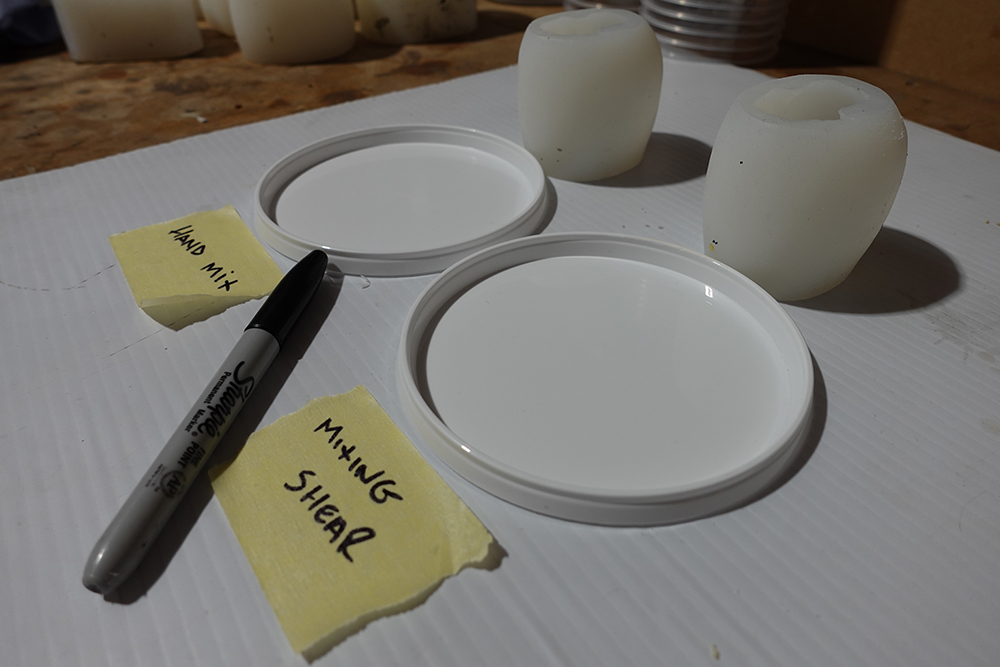
First, Measure the Liquid
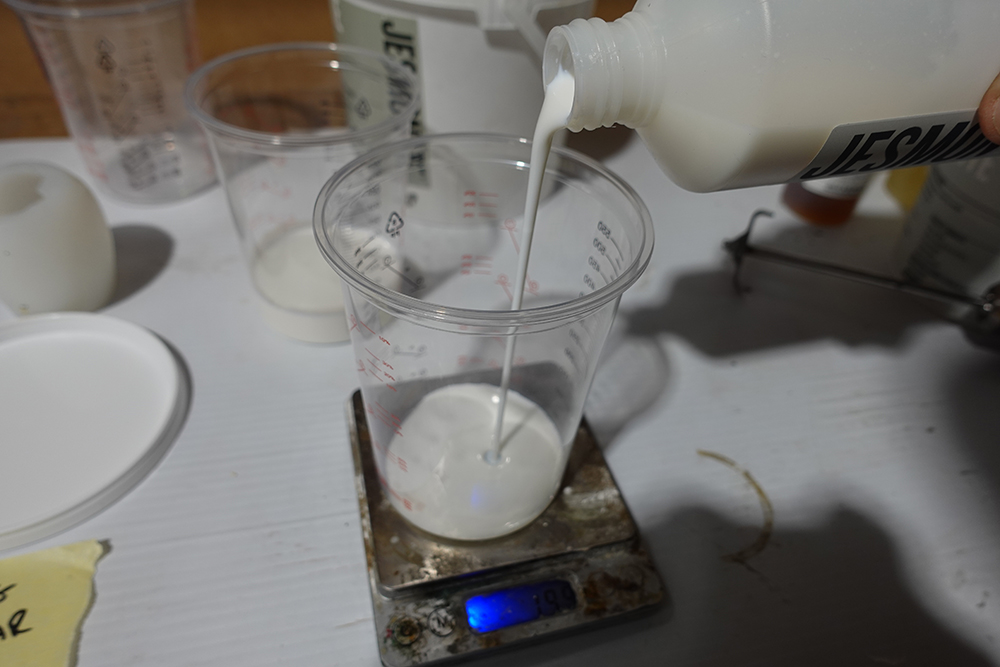
Then adding the powder
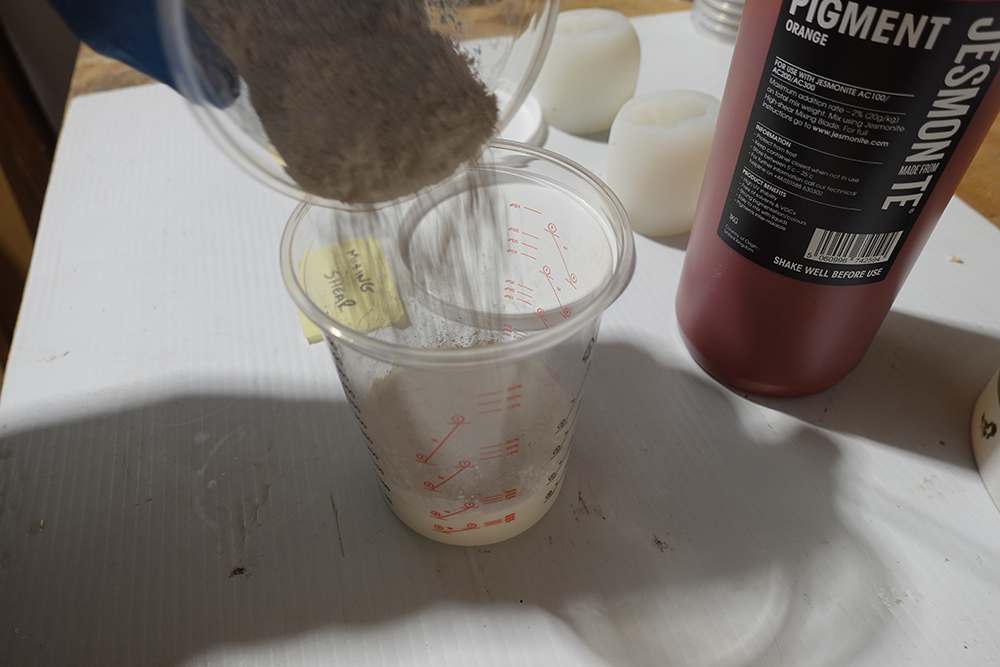
Mixing the two parts together until it comes together, then adding the pigment
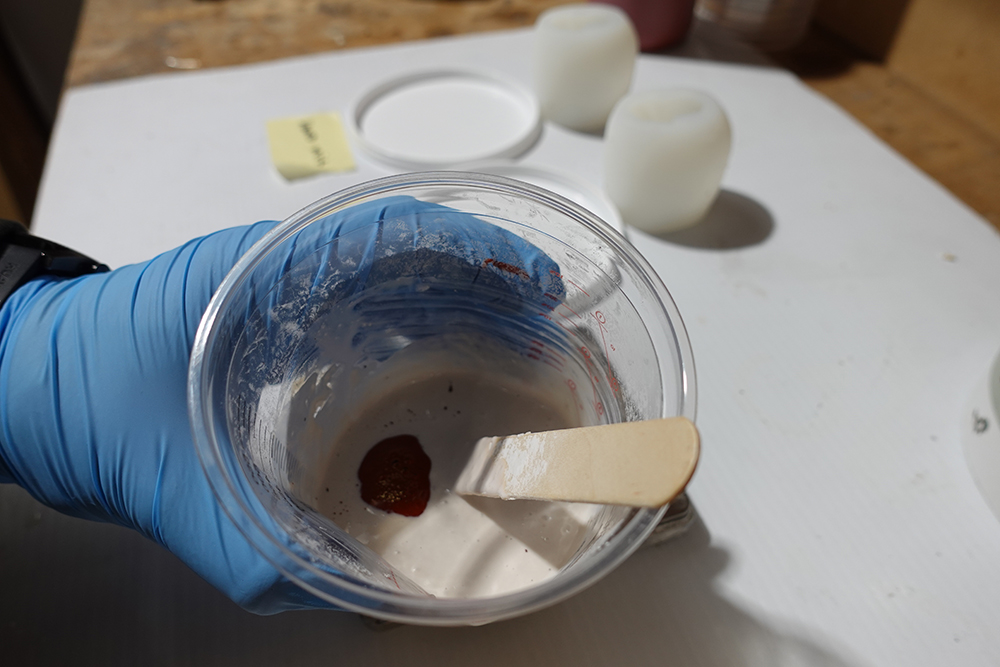
The material for the first batch is mixed until its a thorough colour and poured into the first set of moulds
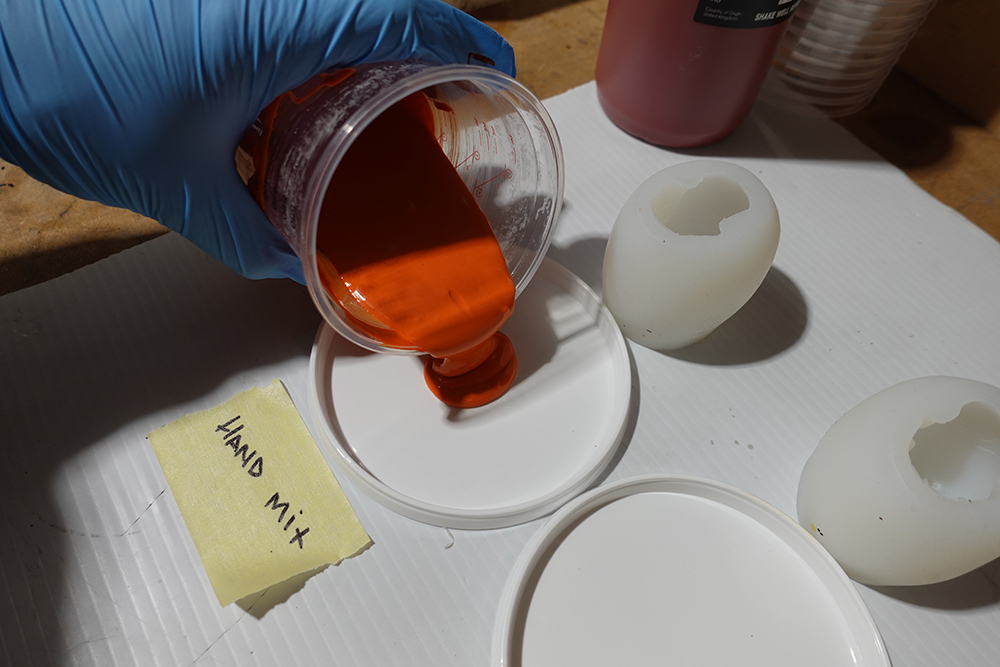
The second batch is mixed just like the first batch but this time the mixing blade is put to use.
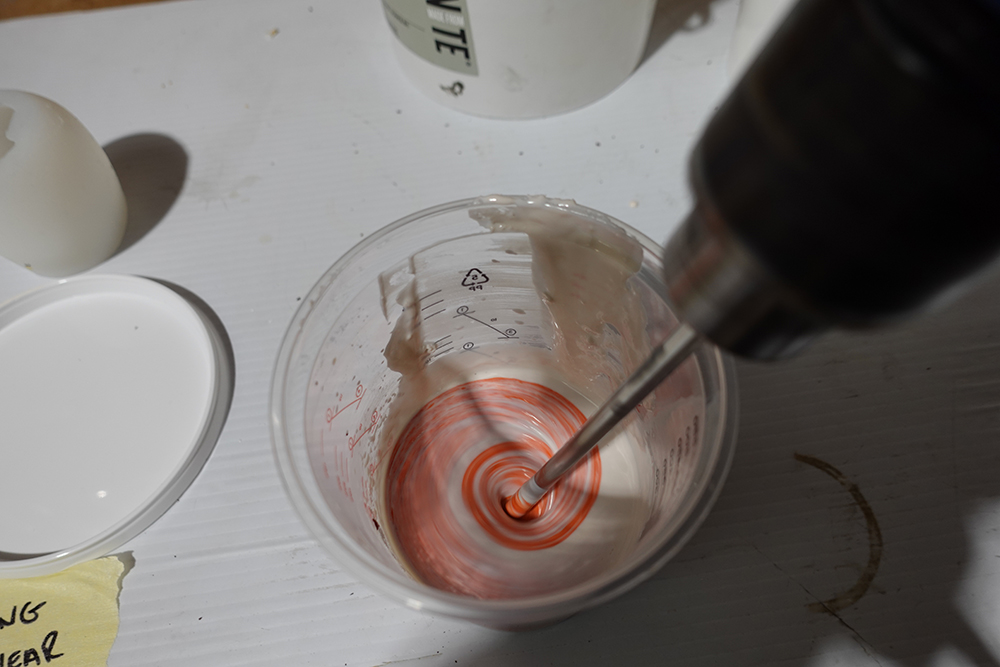
Once its thoroughly well mixed, its then poured into the second set of moulds
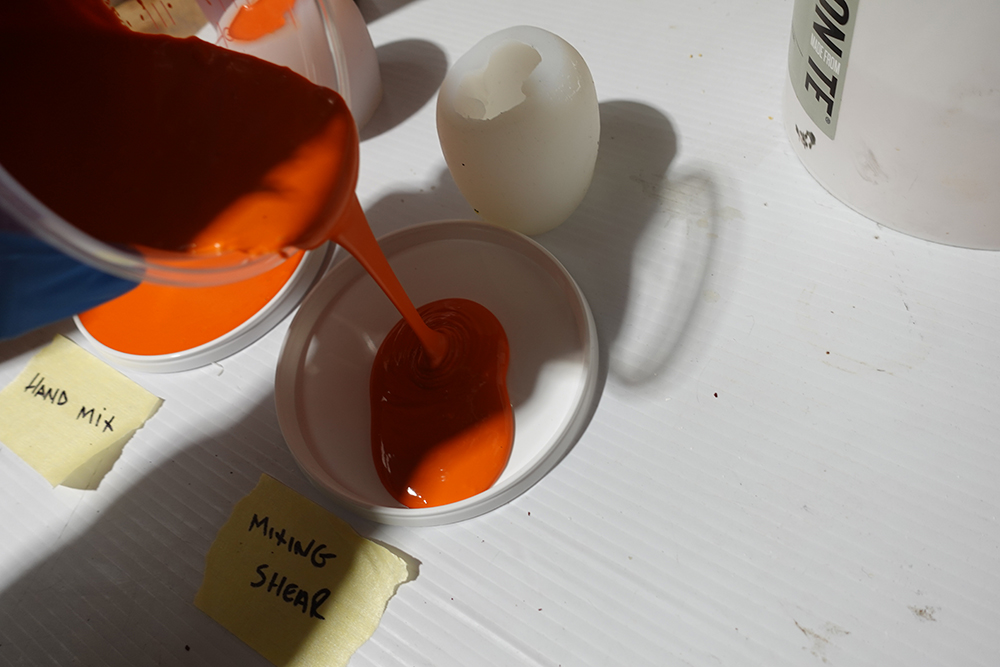
And before we forget, clean the mixing paddle.
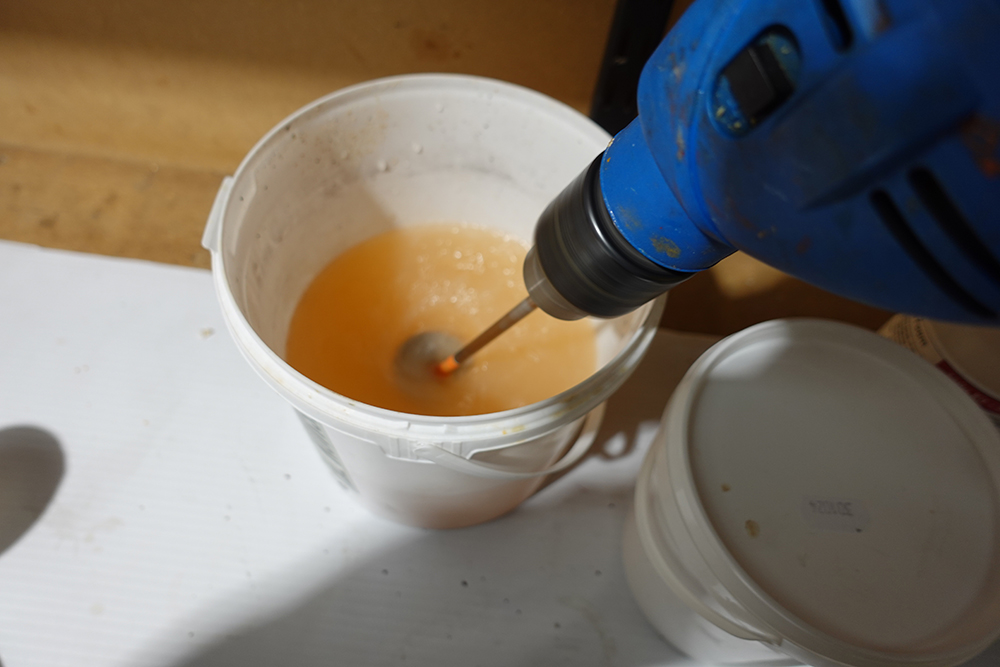
The Jesmonite AC100 material was then allowed to cure for about an hour before demoulding. Once demoulded, the castings were placed on wire racks for drying. Below are some comparisons of the hand-mixed versus the blade-mixed products. Although the differences may be subtle in the photos, if you look closely, you will notice that the hand-mixed castings has a slightly mottled appearance showing some white speckles and what appear to be clear artefacts. This is due to insufficient mixing. In contrast, the material mixed with the blade is much smoother and is much more uniform in colour, even though both mixtures were identical (100g powder, 40g liquid, and 1.4g Jesmonite orange pigment).
Hand Mix Disc
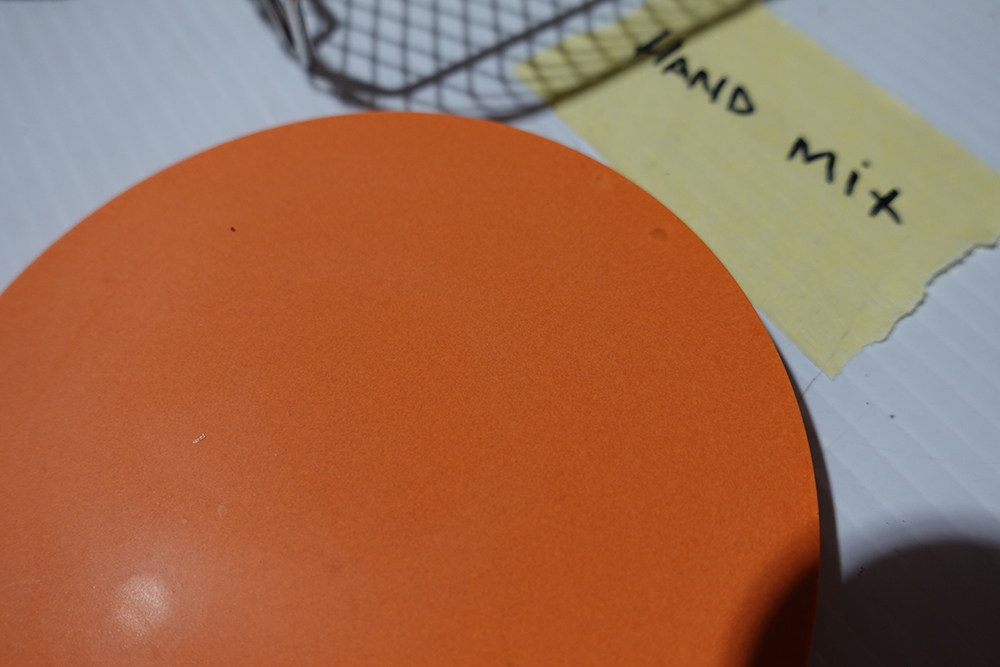
Hand mix disc and skull (left)

Hand mix skull
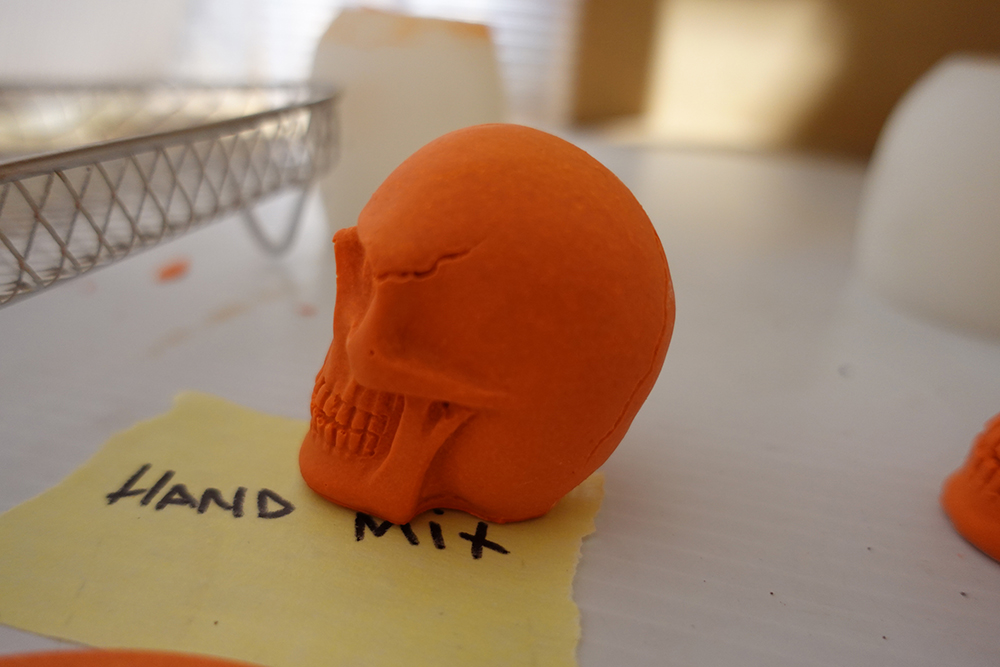
Mixing blade skull
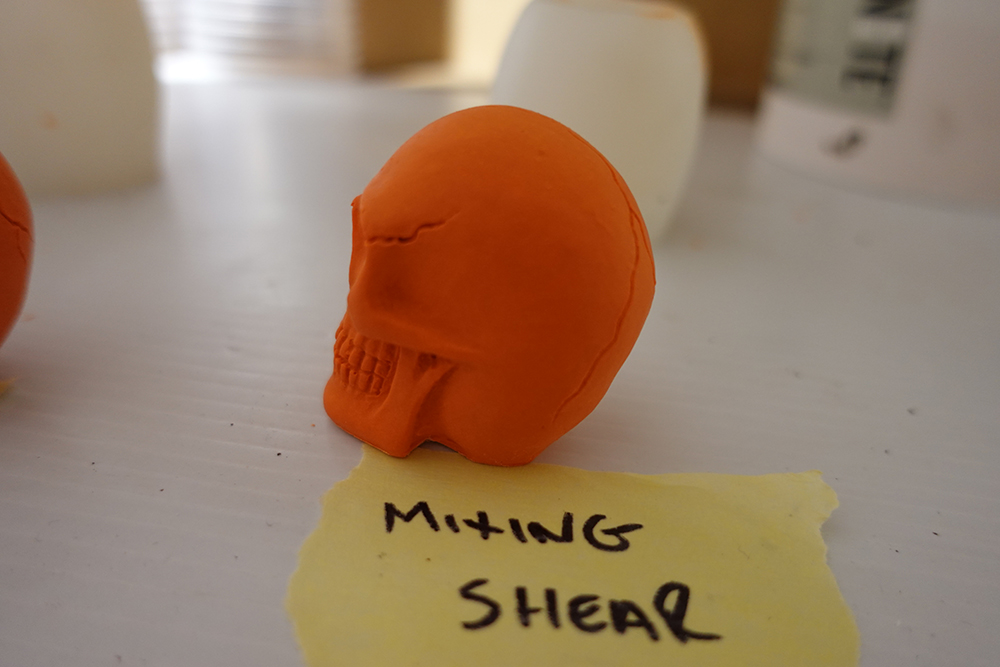
Mixing blade disc
